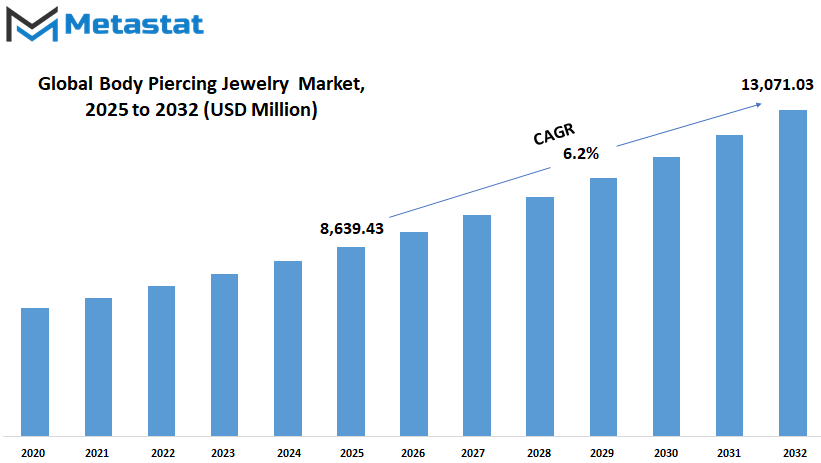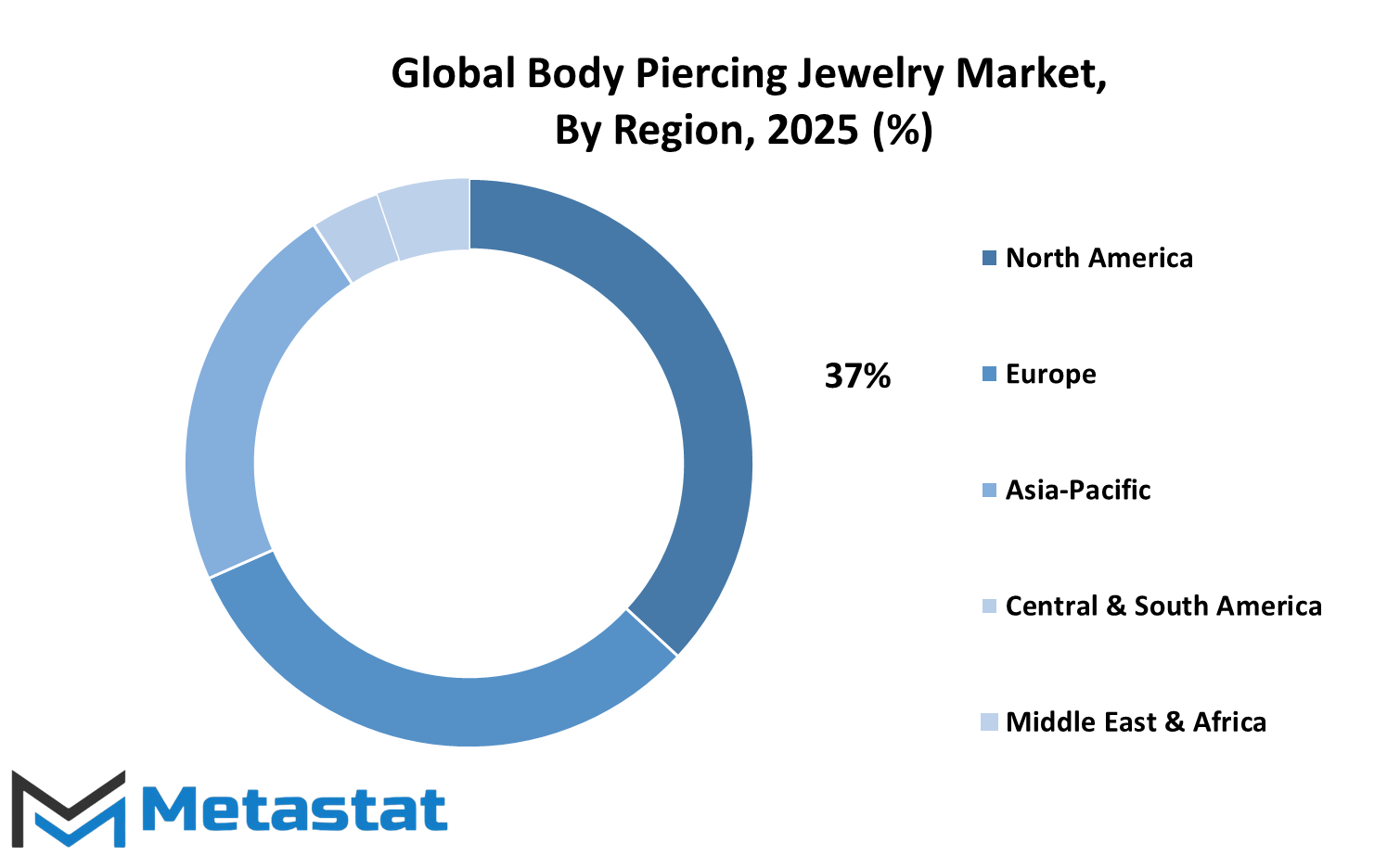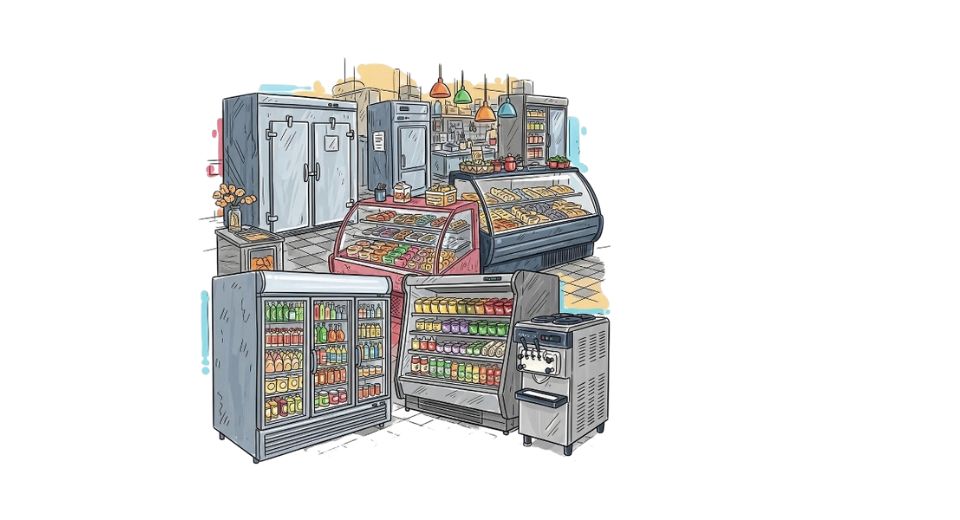MARKET OVERVIEW
The global body piercing jewelry market, being a part of the broader fashion accessories and body expression industry, will be a specialized segment catering to adornment products for pierced body sites. The market will include products offered for use in body modifications such as navel, ear cartilage, eyebrow, tongue, septum, and dermal piercings. Unlike traditional jewelry, piercing jewelry must meet strict standards of biocompatibility, precision, and wear resistance since it is in direct contact with human tissue and skin. The industry will concentrate manufacturers, designers, and distributors into a single entity to manufacture and distribute high-quality, safe, and various-looking products. The company will not only fulfill functional requirements but will ever more pay heed to cultural, social, and personal identity expressions.
The global body piercing jewelry market will range across mainstream and specialized niches, covering a wide variety of materials such as surgical steel, titanium, gold, acrylic, niobium, and bioplast. The materials will satisfy different customers' requirements, ranging from hypoallergenic to high-end appearances. Product design will also differ from straightforward barbells and curved barbells to more sophisticated pieces featuring gemstones, organic materials, and artwork engravings. What will distinguish this market is where fashion-demand coincides with regulatory oversight. Countries will have different standards regarding what material and shape are acceptable for body use, which will affect manufacturing and distribution practices.
North American and European markets, for instance, will demand that the body jewelry is free from harmful substances like nickel, while other markets will value price affordability and mass-market fashion appeal. This segmentation will create a complex structure of supply, which players in the global body piercing jewelry market will need to navigate successfully. Distribution tactics will also shape the market. Retail cyber portals, single piercing shops, specialty retailers, and mass-market e-commerce sites will all have varying roles in the bringing of products to market and in marketing to consumers. Social media influencer profile and greater exposure to online communities based on body art will also influence consumer attitudes and shopping habits.
This will require brands to consistently paint an image throughout the digital world while ensuring that quality and safety standards are never sacrificed. Domestic demand will vary depending on acceptance levels and cultural mindsets regarding body alterations. Urban centers in countries like the United States, Canada, Australia, Germany, and Japan will likely be key trendsetters in the global body piercing jewelry market. The same will turn out to be important pilot areas for innovative designs and materials, especially for younger consumers in search of personalized and unique self-expression. With the growth of the market, the stakeholders will need to balance design innovation with manufacturing standards, fashion style with medical security. While the aesthetics aspect will always drive progress, the inherent technical characteristics of each product will have to be constantly checked. The global body piercing jewelry market will not be just a component of the accessories market but will be standalone as an intrinsic amalgamation of design, health, and identity.
Global body piercing jewelry market is estimated to reach $13,071.03 million by 2032; growing at a CAGR of 6.2% from 2025 to 2032.

GROWTH FACTORS
The global body piercing jewelry market is experiencing favorable growth, mainly because of the increasing popularity of body art and the need to express oneself, especially among youths and fashion-forward consumers. More and more people are turning to body piercings as a way of expressing their own personal style, and the trend is catching on far and wide. This growing popularity finds expression in a heightened demand for different types of jewelry that have been specifically designed for piercing. The way consumers purchase these commodities has also evolved.
With a growing number of internet stores, customers can now see a vast range of jewelry products from the confines of their own homes. Such online shops do not only offer convenience but also an avenue for customization of jewelry, making it easier for customers to find jewelry that suits their own taste and needs. Despite all these positive indicators, the market has a few drawbacks that can hinder its progress. The first significant issue is the risk of allergies or infection due to poor quality materials. If the jewelry is not made with safe and fitting materials, it will lead to illness or distress, discouraging others from getting piercings or buying new jewelry. Also, in some areas, cultural or social views about body piercings are still unfavorable. Such perceptions create a limit to higher popularity and acceptance of body piercing jewelry, limiting how much the market can grow in such an area.
In the future, the global body piercing jewelry market will discover new opportunities by focusing on safer and skin-friendly materials. Hypoallergenic and biocompatible jewelry is more sought after as individuals get more health and safety conscious. This is creating a window of opportunity for firms to offer quality products that satisfy individuals willing to pay for better quality. As such materials gain acceptance, the market is set to expand even larger, attracting a larger segment that values style as well as safety. In the years to come, the confluence of changing consumer preferences, increasing product quality, and hassle-free accessibility with the support of web platforms will drive the market to new growth levels.
MARKET SEGMENTATION
By Type
The global body piercing jewelry market will remain on the radar as people become increasingly open to self-expression through body modification. With time, there will be a growing diversity of jewelry pieces to choose from, giving people ample choices based on their style and preferences. The market will not only increase in size but also in diversity in terms of designs and material utilized, as tastes change and technology improves. Of the trendy body piercing jewelry, the ring will be a continued favorite. These will comprise the captive bead, seamless, and segment rings, each of which provides a distinctive appearance and fit for other piercings. The comfort and versatility of rings ensure that they will continue to be used on different body parts, making them a continued attraction. Barbells will also continue to feature in the market.
Such jewelry will come in straight, curved, and round shapes, offering choices suitable for various piercings and tastes. Their shape will enable both dramatic and low-key statements, depending on personal taste. Labrets and studs, which have a classic yet minimalist design, will continue to appeal to people who like understated elegance. These works will frequently be selected based upon how easy they are to wear and the potential to enhance common styles without overpowering the wearer. Plugs and tunnels will become more popular, particularly among the group that selects stretched piercings as a mode of personal expression. These will provide a unique style where the piercing itself is showcased, frequently taking center stage in one's fashion.
Hoops and hangers, being curved and diverse in size, will always be a classic choice, fitting in with either a casual or elegant look. Shields and belly chains will be favored for those seeking a more embellished or showy piece, frequently worn where they can easily be displayed. The market will also support other body jewelry, including eyebrow jewelry and nose pins, which will increasingly become mainstreamed as body piercing is accepted in many cultures.
These smaller pieces will provide discreet means to improve looks without being too brash. As the global body piercing jewelry market expands, advancements in materials, safety protocols, and design will make it so that newcomers and old-fashioned enthusiasts alike can find something that suits their needs and tastes. This growing selection will enable people to express themselves and exercise their creativity on their own terms in a way that feels real and significant.
By Application
The global body piercing jewelry market will keep on expanding and evolving as people's tastes and lifestyles change over time. It is not merely a matter of selling jewelry; the market is a mirror to the way people want to express themselves and relate to their culture. In the future, the body piercing jewelry market will be driven by different sources, each contributing in some way or other to shaping the future of the market. First, private use will continue to be a dominant aspect of the market. More individuals will opt for wearing body piercing jewelry as an aspect of personal expression or merely because they prefer it. The materials will improve, and the designs become more comfortable and skin-friendly, meaning more customers can choose items to fit their individual style. Customization will most likely become the focus, where buyers can select items that will feel personal and distinctive to them.
Professional application, such as studios and piercing shops, will also contribute to the growth of the market. Such establishments will not only offer the piercing service but also high-quality jewelry that has been made with the sole aim of safety and long-wearing. Professional piercers will be more conscious of the materials and design that best suit, pushing the industry to be more innovative. With greater emphasis on hygiene and comfort, professional-use jewelry will progress further, advancing the market.
Aesthetic and fashion purposes will be an increasingly larger impetus for the market. With fashion cycles changing, body piercing jewelry will find itself a fashionable accessory enhancing various styles. Brands and designers will launch new collections combining traditional craftsmanship with contemporary styles. The jewelry will be perceived not only as a piercings item but also as a component of a total fashion image. This will appeal to young consumers who recognize body jewelry as a means of expressing individuality and creativity.
Cultural and traditional use will continue to affect the market in significant manners. In most societies, body piercing is one of those practices that forms part of such ceremonies and conventions that are transmitted from generation to generation. Such a history will continue to maintain the demand for some kinds of styles and forms of jewelry. With global connectivity, individuals will also find and enjoy forms from other cultures, introducing diversity and beauty to the market.
In total, the global body piercing jewelry market will expand by satisfying the demands of personal users, professionals, fashionistas, and those culturally attached. The future will introduce new materials, improved designs, and additional forms of expressing one's identity through body jewelry. As these various groups shape the market, it will be more exciting and diverse, providing something for every individual interested in wearing body piercing jewelry.
|
Forecast Period |
2025-2032 |
|
Market Size in 2025 |
$8,639.43 million |
|
Market Size by 2032 |
$13,071.03 Million |
|
Growth Rate from 2025 to 2032 |
9.4% |
|
Base Year |
2024 |
|
Regions Covered |
North America, Europe, Asia-Pacific, South America, Middle East & Africa |
REGIONAL ANALYSIS
The global body piercing jewelry market has expanded considerably in recent years and holds bright prospects for further growth. The market encompasses a broad range of products for body decoration, from basic studs to intricate ones made for various areas of the human body. As individuals continue to use body art to express individuality and cultural heritage, there is likely to be an increase in demand for differentiated and distinctive jewelry styles. The market is going to change as producers and designers react to shifts in taste and developments in materials and technologies. Segmenting the market by geography provides insight into where growth is occurring and where it could spread in the future.
North America is a primary market for this industry, and the United States is at the forefront with a significant population and varied influence of cultures. Canada and Mexico also have shares in the region's market, with increased popularity in body piercing among the youth. Buyers in this region tend to look for quality products, compelling businesses to prioritize safety measures and creative designs. Europe also plays an important role in the international market, with nations like the United Kingdom, Germany, France, and Italy being key centers of operation. These nations usually have an active fashion culture, which allows for creativity and diversity in body jewelry.
There is also growing consciousness about ethical sourcing and eco-friendly means of production, which will be the guiding force behind the market in this region in the future. The other European nations add their own local taste and flavor to the mix. In the Asia-Pacific region, growth will be fast. India, China, Japan, and South Korea have thriving youth populations that are embracing body piercing as a way of expressing themselves more than ever. The region also boasts traditional forms of jewelry, which might blend with contemporary styles to form new fads. With the demand for stylish yet affordable products, companies will be compelled to innovate and broaden their product lines. South America, particularly Brazil and Argentina, is also increasingly becoming a visible segment of the market. Cultural diversity and greater openness to body art will prompt more individuals in this region to try out various jewelry accessories.
The Middle East and Africa, with nations like those of the GCC, Egypt, and South Africa, are also interested in body piercing but usually driven by local traditions and laws. Over time, this region will likely see gradual growth as global trends spread. As a whole, the world market for body piercing jewelry will still grow in all these regions. With rising innovation, technological improvements, and shifting societal attitudes, the industry will provide even more options for customers globally. This will open opportunities for fresh fashions, better-quality materials, and greater acceptance of body piercing as an element of personal expression.

COMPETITIVE PLAYERS
The global body piercing jewelry market is poised for tremendous growth as a growing number of people adopt body art and self-expression in a variety of forms. With time, there has been an increased demand for safe, distinctive, and quality piercing jewelry, which has driven companies to innovate and diversify their designs to meet different tastes and preferences. This trend not only indicates a shift in fashion styles but also reveals a cultural acceptance at large of body alteration. With the growth of this market, the competitive dynamics will get tougher with the major players striving hard to sustain and increase their share. There are a number of well-established companies that operate in this market, which contribute significantly to it, such as BodyCandy, Anatometal, Industrial Strength, NeoMetal, LeRoi, Inc., Invictus Body Jewelry, Crazy Factory GmbH, Maria Tash, Rebel Bod, Wildcat GmbH, and Blue Banana.
These players contribute uniquely to the market through innovative designs, high-quality materials, or expert customer service. These businesses have established firm reputations by paying particular attention to safe materials such as titanium and surgical steel, so customers can wear their jewelry without worrying about allergies or infections. This combination of creativity and attention to safety will remain a strong selling point in the future. In the future, the worldwide body piercing jewelry market will probably witness more collaborations between artists and designers, fusing fashion with personal expression. Technology can also play a larger role, with 3D printing and other methods of production enabling even more personalized and detailed designs.
This will provide consumers with greater options and push manufacturers to compete with creative products. Besides, environmental issues may compel companies to go more sustainable, employing recycled metal and green packaging, appealing to an increasing number of aware customers. With the expanding market, these companies will have to weigh innovation with quality and safety, earning the confidence of customers. Through investments in research and development, they can produce products that are not only aesthetically pleasing but also comfortable and long-lasting. Marketing efforts will target reaching younger generations that care about self-expression and authenticity, utilizing social media and influencer alliances to create brand loyalty.
Through these initiatives, the global body piercing jewelry market will continue to grow and gain more attention, becoming an interesting market to observe in the coming years.
Body Piercing Jewelry Market Key Segments:
By Type
- Rings (Captive Bead, Seamless, Segment, etc.)
- Barbells (Straight, Curved, Circular, etc.)
- Studs and Labrets
- Plugs and Tunnels
- Hoops and Hangers
- Belly Chains and Shields
- Other Body Jewelry (Nose Pins, Eyebrow Jewelry, etc.)
By Application
- Personal Use
- Professional Use (Studios, Piercing Parlors)
- Fashion and Aesthetic Purposes
- Cultural and Traditional Usage
Key Global Body Piercing Jewelry Industry Players
- BodyCandy
- Anatometal
- Industrial Strength
- NeoMetal
- LeRoi, Inc.
- Invictus Body Jewelry
- Crazy Factory GmbH
- Maria Tash
- Rebel Bod
- Wildcat GmbH
- Blue Banana
WHAT REPORT PROVIDES
- Full in-depth analysis of the parent Industry
- Important changes in market and its dynamics
- Segmentation details of the market
- Former, on-going, and projected market analysis in terms of volume and value
- Assessment of niche industry developments
- Market share analysis
- Key strategies of major players
- Emerging segments and regional growth potential








 US: +1 3023308252
US: +1 3023308252






